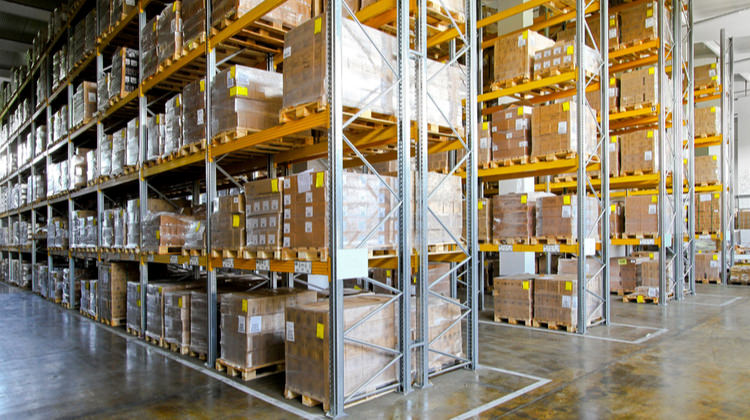Business
The Difference Between a 3PL and 4PL

The Difference Between a 3PL and 4PL
In the complex world of supply chain management, outsourcing logistics services has become a common practice for companies looking to streamline operations and focus on their core business. Two pivotal players in this realm are Third-Party Logistics (3PL) and Fourth-Party Logistics (4PL) providers. While both offer logistics solutions, understanding the nuances between a 3PL and a 4PL is crucial for companies to make informed decisions that align with their strategy and operational needs. Let’s delve deeper into what sets them apart.
What is a 3PL?
Third-Party Logistics – 3PL providers are companies that specialize in offering comprehensive logistics services to businesses. These services can range from warehousing, transportation, packing, freight forwarding, inventory management, to order fulfillment, among others. The key aspect of 3PL services in Brisbane is their focus on optimizing the logistics operations of the companies they serve. By outsourcing logistics functions to a 3PL, businesses can leverage specialized expertise, reduce costs, and improve service levels without having to invest heavily in infrastructure or technology.
What is a 4PL?
Fourth-Party Logistics (4PL) providers, on the other hand, take the concept of logistics outsourcing a step further. In essence, a 4PL acts as a logistics integrator that assembles and manages all resources, capabilities, and technology of a supply chain with a single point of contact. Unlike 3PLs, which primarily offer operational logistics services, 4PLs are more about managing the entire supply chain. This includes not just the physical distribution and inventory management, but also the strategic oversight of logistics activities, technology solutions, and supply chain analysis. They often do not own any logistics resources themselves but focus on offering a more consultative and managerial role in orchestrating complex supply chain solutions.

Key Differences
Scope of Services
- 3PL: Offers operational solutions, such as transportation, warehousing, and fulfillment services.
- 4PL: Provides broader, strategic management of the entire supply chain, including 3PL services, supply chain strategy, and IT systems.
Ownership and Assets
- 3PL: Typically owns or has access to logistics assets like trucks, warehouses, and distribution centers.
- 4PL: Rarely owns physical logistics assets and focuses on the management and optimization of the supply chain using existing resources.
Integration and Control
- 3PL: Integrates into a specific part of the customer’s supply chain to enhance logistics operations.
- 4PL: Takes a more holistic approach by managing the entire supply chain, often serving as the single point of contact between the customer and multiple logistics providers.
Focus and Strategy
- 3PL: Focuses on streamlining and improving logistics operations.
- 4PL: Aims at strategic oversight, supply chain efficiency, and driving innovation across all logistics and supply chain activities.
The Evolution of Logistics Partnerships
As the global economy and markets continue to evolve at an unprecedented pace, so does the role of logistics partners. The dynamic nature of global trade, driven by technological advancements, has paved the way for more integrated and complex supply chain solutions. This shift in demand has been a key driver in the transformation from traditional 3PL services to more strategic 4PL partnerships. Businesses are not just seeking firms to handle the movement of goods; they are looking for partners capable of providing insights, flexibility, and agility to navigate the rapidly changing supply chain environment. This is where 4PL providers excel, by bringing together the best-in-class capabilities of other 3PLs, technology solutions, and strategic management to facilitate change and drive supply chain excellence.
The Strategic Implication of Choosing 3PL or 4PL
The decision to go with a 3PL or a 4PL provider should align with a company’s long-term strategic objectives. For startups and SMEs (Small and Medium-sized Enterprises) that are in the growing phase, a 3PL might be an appropriate choice due to its operational nature, allowing these companies to scale their logistics needs without significant investments. As these companies grow and their supply chains become more complex, a transition to a 4PL provider could be beneficial, as it offers a centralized management model capable of executing a comprehensive supply chain strategy.
Conclusion
Choosing between a 3PL and a 4PL depends on the nature, needs, and strategic goals of a business. For companies looking for specialized logistics services and operational expertise without the complexity of managing those operations themselves, a 3PL is a suitable option. On the other hand, businesses seeking a top-level view of their supply chain, along with comprehensive management and optimization of all logistics and supply chain functions, might find a 4PL to be a better fit. Understanding these differences can help businesses better navigate the logistics landscape, leading to improved efficiency, cost savings, and competitive advantage.





















